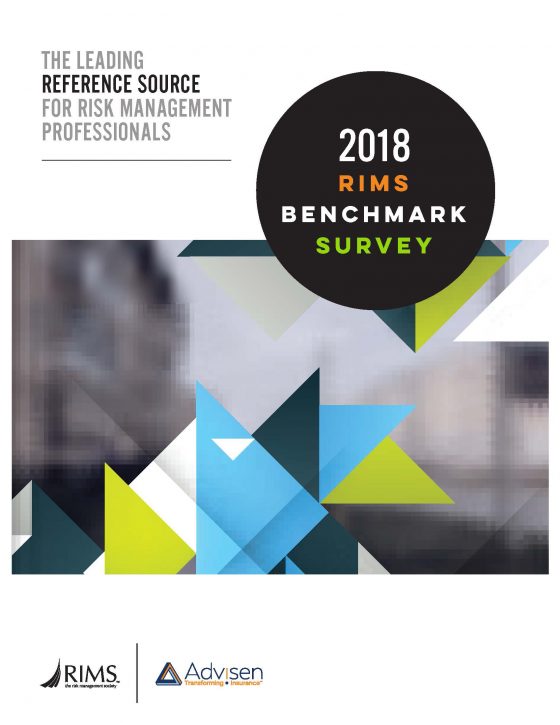The risk management profession is proving its resiliency. Even in the face of major hurricanes, technological influence and the seemingly common threat of international trade wars, 2017 saw the total cost of risk (TCOR) decline for the fourth consecutive year, according to the 2018 RIMS Benchmark Survey, which was jointly published by RIMS and Advisen.
Despite these uncertainties, the TCOR per $1,000 of revenue continued to drop, the survey  revealed, ending at $9.75 in 2017. The main drivers were declines in liability costs (8%), by decreases in property, liability, workers compensation, management liability, and professional liability costs, as well as overall risk management administration costs. TCOR is defined in the survey as the cost of insurance, plus the costs of the losses retained and the administrative costs of the risk management department.
revealed, ending at $9.75 in 2017. The main drivers were declines in liability costs (8%), by decreases in property, liability, workers compensation, management liability, and professional liability costs, as well as overall risk management administration costs. TCOR is defined in the survey as the cost of insurance, plus the costs of the losses retained and the administrative costs of the risk management department.
The survey encompassed industry data from 590 organizations and contains policy-level information from 10 coverage groups, subdivided into 90 lines of business.
Advisen Co-Founder and Chief Strategy Officer David Bradford said market conditions are favorable for insurance buyers. “A competitive insurance market resulting from a chronic overabundance of risk capital strongly contributed to TCOR decreasing steadily since 2013,” he said. “Not even record catastrophe losses in 2017 could derail the downward trend.”
Key findings from this year’s RIMS Benchmark Survey include:
- TCOR fell despite record-high natural catastrophe losses such as hurricanes Maria, Irma and Harvey, as well as wildfires and mudslides in California.
- While TCOR per $1,000 of revenue fell for most industries, four—healthcare, government & nonprofit, information technology and consumer staples—saw rising TCOR in 2017.
- As predicted in the 2017 survey, the percentage of companies buying cyber insurance continued its increase since 2011, ending at 65% in 2017.
- In 2017, the percentage of companies buying cyber insurance increased to 65%. This trend has continued upward since 2011. Additionally, the cost of cyber insurance per $1,000 of revenue increased 33% from 2016.
- The adoption of new technologies such as machine learning and blockchain, political instability in several parts of the world, globalization, terrorism and cyber threats are expected to further shape the risk landscape in 2018 and beyond.
Bradford noted that the traditional insurance pricing cycle may seem broken, but that term is more likely a new normal resulting from a more efficient insurance market. “The factors contributing to this more efficient market are varied and complex, but the upshot is that a hard market like that last seen in 2001-2002, when commercial insurance rates shot up 50 percent, may simply never occur again,” he said. “Prices may rise, but most likely they will be quickly beaten down by fresh capital flowing into the market. That is good news for risk managers.”
“As the tools, resources and technologies that facilitate the exchange of ideas and experiences continue to improve, risk management professionals have become better equipped to strengthen their risk financing programs and apply cutting-edge, cost-cutting strategies,” said RIMS CEO Mary Roth. “The year-over-year data available in the RIMS Benchmark Survey allows professionals to accurately set expectations, and achieve goals while designing competitive but fair insurance programs for their organizations.”
To order a copy of the 2018 RIMS Benchmark Survey, visit www.advisenltd.com/media/reports/rims-benchmark-survey/ or www.RIMS.org/book.
